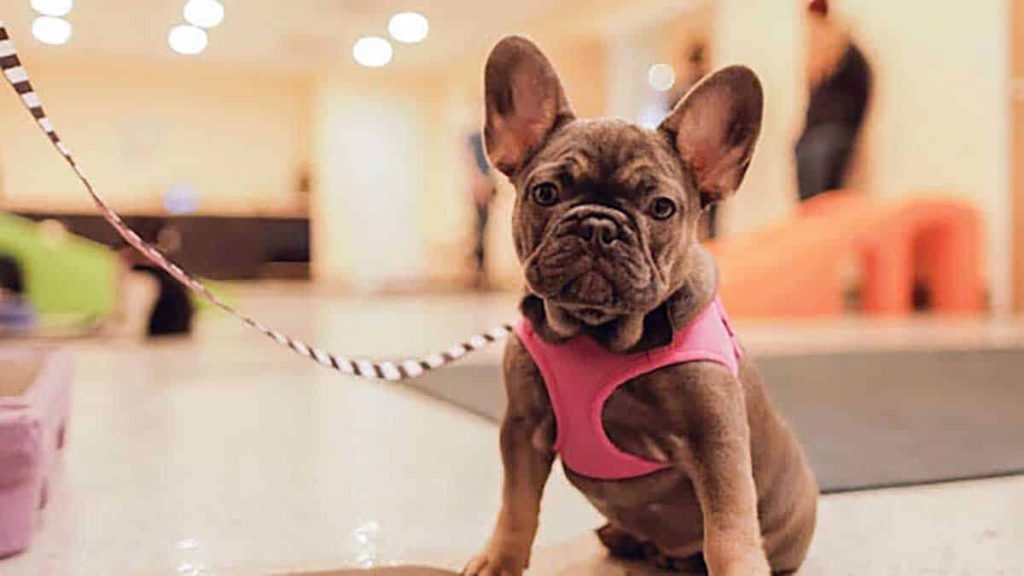Behavioral Changes in Pets During the Pandemic: What Have We Learned?

The Impact of COVID-19 on Our Beloved Pets
The onset of the COVID-19 pandemic brought about profound changes in lifestyle, deeply affecting not only humans but our furry companions as well. As households transitioned to a new normal of remote work and stay-at-home orders, pets found themselves in an unfamiliar landscape. This unprecedented period highlighted essential aspects of pet behavior, prompting pet owners to reevaluate their companions’ needs and emotions.
What Changed for Our Pets?
During these challenging times, several notable behavioral changes in pets were widely observed:
- Increased Separation Anxiety: With many owners spending the majority of their time at home, pets became accustomed to constant companionship. As restrictions eased and owners began to return to work or step out for errands, pets exhibited signs of distress when left alone. Symptoms included excessive barking, destructive behaviors, and an inability to settle down, all of which can be indicators of separation anxiety that many owners may not have previously noticed.
- Altered Activity Levels: The pandemic also resulted in fewer opportunities for socialization and exercise. Dog parks closed, playdates with other pets were curtailed, and regular walks became less frequent as people hesitated to venture out. This dramatic change led to fluctuations in activity levels, with some pets becoming hyperactive due to pent-up energy, while others may have become lethargic without their usual routines.
- Heightened Attention Seeking: As owners transitioned to remote work setups, pets often sought more interaction and engagement. This need for attention might manifest as persistent begging for playtime or cuddles, indicating that pets felt the emotional strain of a disrupted routine. The enhanced presence of their humans gave them a glimpse into a world of higher social interaction, which they yearned to maintain.
What Have We Learned?
The lessons learned during this time provide invaluable insights into pet behavior and welfare. As owners observed their pets more closely, they discovered important details regarding their emotional well-being and the bond shared between them. Acknowledging the signs of anxiety or behavioral changes became a crucial step in providing the necessary support to their pets.
These unusual circumstances have also led pet owners to explore various enriching activities, such as puzzle toys, virtual training sessions, and interactive games, to keep their pets mentally stimulated and engaged. By adapting to these new routines, owners have turned challenges into opportunities for growth and strengthened their relationships with their pets.
Ultimately, the pandemic has reminded us that our pets are not just adorable companions but also sensitive beings with intricate emotional needs. Understanding their behavior in times of uncertainty encourages owners to cultivate healthier, happier pets. As we continue to adapt to this new normal, let us remain vigilant and empathetic to the needs of our furry family members, ensuring they thrive in our ever-evolving world.

DIVE DEEPER: Click here for essential insights on pet nutrition
Understanding the Behavioral Shifts in Our Pets
The pandemic has not only altered the daily routines of pet owners but has also led to a significant shift in the behaviors of our pets. Observing these changes has provided a unique lens through which we can understand our pets better. As pets adapted to an environment marked by uncertainty and instability, various behavioral anomalies emerged, shedding light on both their psychological health and our roles as caregivers.
Increased Socialization Needs
One of the most striking behavioral changes noted during the pandemic was the increased need for social interaction. Pets, especially dogs, are inherently social creatures who thrive on interaction with both humans and other animals. With owners spending extended time at home, many pets became accustomed to a constant presence and developed a dependency on their humans for companionship. When faced with the return of normalcy—a return to work or social outings—these pets experienced confusion and anxiety. This reliance on human interaction highlighted an essential facet of pet psychology: the significance of companionship.
Heightened Sensitivity to Routine Disruptions
During the pandemic, pets became acutely aware of changes in their owners’ routines. Slight variations in daily schedules—such as unusual work hours or increased screen time—led to observable stress levels. Many pets exhibited signs of stress-related behaviors, including excessive grooming, drooling, and pacing. Understanding these symptoms is critical, as they can indicate deeper emotional unease associated with altered routine. Pet owners had the opportunity to recognize the need for maintaining consistency, especially in feeding and exercise schedules, to combat anxiety.
Health Impacts from Activity Changes
The decline in regular activity due to gym closures and social distancing measures presented new challenges for pet health. Many owners reported a noticeable increase in pet weight gain, prompting veterinarians to emphasize the importance of maintaining physical activity. Engaging pets in daily walks, even if briefly, not only supports their physical health but also contributes positively to their mental well-being. Here are some additional strategies that can effectively address activity levels:
- Interactive Play: Incorporating games like fetch or tug-of-war can substitute for social play.
- Obstacle Courses: Setting up small courses in the yard or even indoors can stimulate both physical exercise and mental sharpness.
- Virtual Training Classes: Online courses can help owners learn how to teach tricks while providing a way to engage with their pets.
These adjustments have proven not only beneficial for the pets’ distribution of energy but also in solidifying the bond between pets and their owners. As we reflect on these learnings, we can appreciate how simple changes in our approach can yield significant improvements in our pets’ quality of life during such unpredictable times. The pandemic has indeed urged pet owners to become more observant and responsive to the needs and emotions of their pets, ultimately nurturing a healthier and happier cohabitation.
Behavioral Changes in Pets During the Pandemic: What Have We Learned?
As we delve into the intricate world of pet behavior during the pandemic, it is crucial to understand how the drastic changes in human routines have influenced our furry companions. With a surge in remote work and social distancing measures, pets experienced an unprecedented shift in their daily lives.Firstly, many pets have shown signs of separation anxiety due to the sudden change in their owners’ availability. Research indicates that pets, particularly dogs, have become more reliant on their humans for companionship, leading to an increase in behaviors such as barking, whining, and destructive activities when left alone. This phenomenon raises questions about how to best support our pets during transitions back to normal routines.Moreover, the pandemic has also contributed to changes in activity levels. Owners working from home often engaged in playtime or indoor exercise with their pets, resulting in a rise in physical and mental stimulation. However, as restrictions ease and work schedules return to pre-pandemic norms, many pets face the challenge of reduced interaction and stimulation once again. This discrepancy can lead to boredom and stress, underscoring the importance of developing a consistent routine that supports pets’ mental well-being.Another significant behavioral change noted is the increase in training opportunities. Many pet owners utilized the lockdown period to engage in behavioral training and teach new commands, skills, or tricks to their pets. This rise in training not only strengthens the bond between owner and pet but also contributes to better socialization and behavior management. Such initiatives can produce long-lasting positive effects on pets’ behavior, enhancing their adaptability in various environments.Overall, these behavioral shifts present invaluable insights into our pets’ needs during times of significant change. Understanding these dynamics equips pet owners with the knowledge to enrich their pet’s lives and address potential issues stemming from the pandemic’s disruptions. The ongoing study of these changes reveals deeper connections between humans and pets, prompting us to reconsider our approaches to pet care and companionship in a post-pandemic world.
| Category | Key Features |
|---|---|
| Separation Anxiety | Increased dependence on human companionship, leading to distress. |
| Activity Levels | Shift from increased indoor play to potential boredom as owners return to work. |
| Training Opportunities | Enhanced bonding and socialization through dedicated training time. |
This evolving understanding of our pets’ behaviors not only helps in providing better care but also enhances the human-animal bond, crucial for fostering a happier living environment. As we continue to learn from these changes, it becomes clear that adapting our practices can lead to improved well-being for both pets and their owners.
DISCOVER MORE: Click here for tips on creating a safe and comfortable space for your pet
The Evolving Dynamics of Pet Anxiety
Amidst lockdowns and social restrictions, anxiety levels in pets saw a marked increase. A recent survey from the American Kennel Club revealed that nearly 60% of dog owners reported their pets displaying signs of anxiety during the pandemic. This increase was largely attributed to the isolation many pets experienced in the early months when owners were home all day and then abruptly returned to work. The behaviors associated with this anxiety manifested in various forms, including barking, destructive chewing, and excessive clinginess. Understanding these behavioral shifts has underscored the importance of recognizing mental health in our pets, which often gets overlooked.
Adaptive Strategies for Anxiety Management
During the pandemic, pet owners were prompted to develop strategies to mitigate anxiety in their animals. Many turned to professional help, including online consultations with veterinarians and animal behaviorists. One effective approach was the use of calming aids, such as anxiety wraps, pheromone diffusers, and supplements designed to promote relaxation. The introduction of technology, including apps that monitor pet behavior and provide anxiety management tips, became popular. These tools helped many owners navigate the complexities of pet anxiety while reinforcing the bond with their animals.
- Consistent Training Techniques: Positive reinforcement training methods were emphasized as a way to help pets cope with behavioral changes. Techniques like clicker training not only reinforced good behavior but also served as a distraction from anxiety-inducing situations.
- Interactive Apps: Various digital platforms emerged, providing engaging content that stimulated pets’ minds and reduced stress. These can include puzzle games and interactive videos specifically designed for animals.
- Routine Reinforcement: Maintaining a consistent schedule, even when working from home, proved beneficial. Pets thrive on routine and predictability, which can help lessen anxiety.
Heightened Awareness of Health and Wellness
The pandemic has also prompted many pet owners to become more vigilant about their pets’ overall health and well-being. Reports from the Human Animal Bond Research Institute noted that 75% of pet owners felt a greater sense of responsibility for their pets’ health during this time. This newfound commitment often led to more frequent veterinary checks, vaccination updates, and dental care, as pet owners sought to ensure their pets remained healthy during uncertain times.
The emphasis on mental enrichment also grew, as many owners sought out new ways to engage their pets’ minds. Activities such as scent training, agility courses, and even social media content creation became popular. Such mental stimulation is critical; studies suggest that an engaged mind contributes significantly to better emotional health for pets, providing both a challenge and a sense of accomplishment.
Shifts in Pet Ownership Trends
Interestingly, the pandemic has also influenced pet ownership trends in the United States. With stay-at-home orders in effect, many individuals and families decided to welcome new pets into their homes. According to a survey by the American Pet Products Association, pet ownership surged by approximately 20% during the pandemic. This sudden increase brought attention to the responsibilities of pet ownership and the importance of behavioral understanding, fostering a community of support among new pet owners passionate about learning.
As a result, various pet support groups emerged online, offering resources for training, handling behavioral issues, and building community. This support network has been vital, allowing both experienced and new pet owners alike to share their experiences and solutions, demonstrating how we can grow together through this unique challenge presented by the pandemic.
DON’T MISS: Click here to learn how vaccinations can protect your pet
Conclusion: Insights Gained from Behavioral Changes in Pets During the Pandemic
The pandemic has undoubtedly reshaped our relationship with pets, revealing not only the depth of our bonds but also the complexities of pet behavior. As we navigated through increased anxiety, shifts in ownership trends, and a heightened awareness of health and wellness, it became clear that understanding our pets’ behavioral changes is crucial. The 60% of dog owners reporting anxiety-related issues underscores a pressing need for proactive management strategies. From employing calming aids to maintaining consistent routines, pet owners have learned valuable lessons in catering to their companions’ emotional needs.
The surge in pet ownership, marked by a 20% increase in new households welcoming pets, has fostered community building among owners seeking guidance and support. These shared experiences have enriched our knowledge and brought attention to the need for ongoing education in pet care. Moreover, the pandemic has placed an emphasis on mental enrichment activities, translating to healthier and happier pets and highlighting the significance of mental health in our furry friends.
As we move forward, the insights gained during this unprecedented time should not fade into the backdrop. Pet owners now hold a stronger awareness of both physical and mental well-being in pets, reinforcing the responsibility that comes with pet ownership. By continuing to explore and implement effective strategies to ensure our pets’ emotional health, we can foster not only individual animal well-being but also a supportive community dedicated to the shared joy and challenges of pet parenting. As we reflect on these lessons, let us commit to being informed caretakers who prioritize our pets’ needs, ensuring a better quality of life for all our beloved companions.


